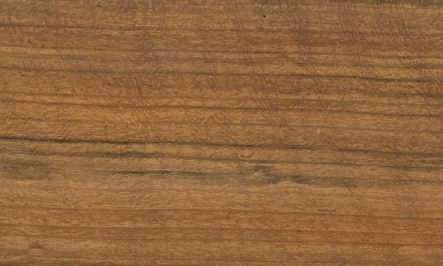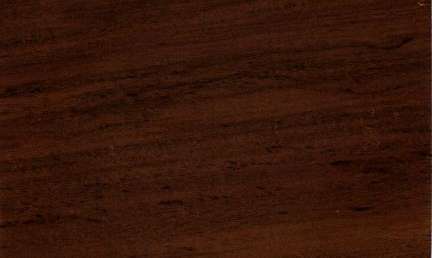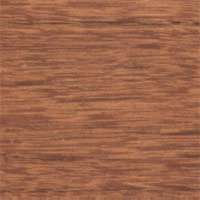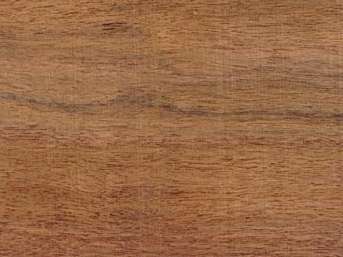   
Mutenye (Guibourtia arnoldiana)
Family: Leguminosae
Common names: Benge, Benzi, Bubinga, Essingang, Kerazingo, Kevasingo, Kevazingo, Kouan, Libenge, M'benge, M'Penze, Mbenge, Mutenye, Non-eyen, Ntene, Olive walnut, Oliver walnut, Ovang, Tropical oliver, Waka
Distributed in: Angola, Cameroon, Central African Republic, Congo, Nigeria, South Africa, Zaire (Africa)
Distribution overview: West Central Africa, particularly Zaire.
Common uses: Agricultural implements, Bent Parts, Billiard-cue butts, Boat building (general), Boat building, Boxes and crates, Cabinetmaking, Canoes, Chairs, Chests, Concealed parts (Furniture), Decorative veneer, Desks, Dining-room furniture, Domestic flooring, Dowell pins, Dowells, Drawer sides, Figured veneer, Fine furniture, Floor lamps, Flooring, Furniture , Furniture components, Furniture squares or stock, Furniture, Hatracks, Heavy construction, Joinery, Kitchen cabinets, Lifeboats, Light construction, Living-room suites, Mine timbers, Musical instruments, Office furniture, Parquet flooring, Plywood, Poles, Posts, Radio - stereo - TV cabinets, Railroad ties, Rustic furniture, Shipbuilding, Stools, Sub-flooring, Tables , Turnery, Utility furniture, Vehicle parts, Veneer, Veneer: decorative, Wardrobes
Product sources: The genus, which is native to Africa, supplys four fairly well known timbers which are considerably different in color, despite their close botanical kinship.Mutenye is one of several important species contributed to international trade by Guibourtia. It is not as plentiful compared to other Guibourtia species, and the price is moderate for an imported species.The ITTO reports that timber from this species is produced in low quantities but frequently and exported in low volumes.
Environment profile: Not threatened
Colors: the heart isYellow to golden-yellow to orange, Yellowish brownand the sapwoodWell defined, White to yellow.The grain isWavy, the textureMedium
Natural durability: Susceptible to attack from powder post (Lyctid & Bostrychid) beetles, Susceptible to attack from termites (Isoptera)
Odor: No specific smell or taste
Kiln Schedules: UK=C US=T3C2/T3C1 Fr=3
Drying Defects: Moderate surface checking, Moderate twist/warp
Ease of Drying: Requires care
Drying requires care since the wood has high shrinkage. Slow kiln-drying has been recommended
Tree Identification: Bole/stem form is buttressed
Comments: General finishing qualities are rated as good Mutenye has been described as a poor man's rosewood. Its density is reported to be in the same range as the softer Brazilian softwoods, while its texture is closer to Honduras rosewood.
Blunting Effect: Blunting effect on machining is severe
Cutting Resistance: Low cutting resistance
Gluing: Fair gluing properties
The wood has fairly good gluing properties. Gum cells occasionally affect gluing qualities
Moulding: For best use a reduced cutting angle of 15 degrees
Movement in Service: For best use a reduced cutting angle of 15 degrees
Nailing: Difficult to nail, Good nailing qualities
Planing: Good response to both hand and machine tools
Resistance to Impregnation: Sapwood is moderately resistant
Response to hand tools: Responds fairly well to hand tools
Sanding: Good sanding qualities
Steam bending: Moderate
Screwing: Good screwing properties
; Turning:
The wood is fine-textured which suggests good turning properties, but there is a high risk of chipping because of interlocked and wavy grain
Polishing: Satisfactory; Staining: Stains very well
;
- Numerical data Metric
- Numerical data English
- Strength properties
- References
 |
 |
 |
 |
| Item |
Green |
Dry |
Metric |
| Specific Gravity |
|
0,69 |
|
| Density |
|
785 |
kg/m3 |
| Bending Strength |
939 |
1440 |
kg/cm2 |
| Crushing Strength |
|
107 |
kg/cm2 |
| Hardness |
|
899 |
kg |
| Impact Strength |
|
|
cm |
| Shearing Strength |
|
146 |
kg/cm2 |
| Stiffness |
132 |
152 |
1000 kg/cm2 |
| Tangential Shrinkage |
9 |
|
% |
| Radial Shrinkage |
4 |
|
% |
| Weight |
817 |
769 |
kg/m3 |
| Maximum Load |
|
|
cm-kg/cm3 |
| Toughness |
|
586 |
cm-kg |
| Static Bending |
|
808 |
kg/cm2 |
|
 |  |  |  | | Item | Green | Dry | English | | Bending Strength | 13357 | 20492 | psi | | Crushing Strength | | 1529 | psi | | Density | | 49 | lbs/ft3 | | Hardness | | 1983 | lbs | | Maximum Crushing Strength | 7683 | 10303 | psi | | Shearing Strength | | 2080 | psi | | Static Bending | | 11505 | psi | | Stiffness | 1887 | 2167 | 1000 psi | | Toughness | | 509 | inch-lbs | | Specific Gravity | | 0.69 | | | Weight | 51 | 48 | lbs/ft3 | | Radial Shrinkage | 4 | | % | | Tangential Shrinkage | 9 | | % | | Volumetric Shrinkage | 12 | | % | |
Max. crushing strength = high
Shearing strength (parallel to grain) = medium
Bending strength (MOR) = high
Shrinkage, Tangential = fairly large
Shrinkage, Radial = moderate
Modulus of Elasticity (stiffness) = medium
Hardness (side grain) = hard
Density (dry weight) = 46-52 lbs/cu. ft.
Bending strength (MOR) = medium
Shrinkage, Radial = fairly large
Hardness (side grain) = medium
Shrinkage, Volumetric = moderate
Shrinkage, Volumetric = fairly large
Shrinkage, Tangential = moderate
Shrinkage, Tangential = large
Shrinkage, Radial = small
Modulus of Elasticity (stiffness) = very high
Modulus of Elasticity (stiffness) = low
Modulus of Elasticity (stiffness) = high
Max. crushing strength = very high
Density (dry weight) = 53-60 lbs/cu. ft
Bending strength (MOR) = very high
Shrinkage, Volumetric = small
Shrinkage, Volumetric = large
Shrinkage, Tangential = small
Shearing strength (parallel to grain) = low
Arno, J. 1989. Guibourtia arnoldiana - Benge. In A Guide to Useful Woods of the World, Flynn Jr., J.H., Editor. King Philip Publishing Co., Portland, Maine.Banks, C.H. and J.P. Schoeman. 1963. Railway Sleeper and Crossing Timbers. Bulletin No. 41, Republic of South Africa. The Government Printer, Pretoria, South Africa.Banks, C.H., Schoeman, J.P., Otto, K.P.,1977,The Mechanical Properties of Timbers with particular reference to South,Africa,South African Forestry Research Institute Bulletin,(Ed.,Schoeman, J.P. 1973 & Otto K.P. 1976,No.48Banks, C.H.,1954,The Mechanical Properties of Timbers with Particular Reference to those,grown in the Union of South Africa,Journal of the South African Forestry Association,No. 24 pp.44-65,[South,African Forestry Journal]Bolza, E., Keating, W.G.,1972,African Timbers - the Properties, Uses and Characteristics of 700 Species,C.S.I.R.O. Div. of Building ResearchChudnoff, M.,1984,Tropical Timbers of the World,U.S.A. Department of Agriculture, Forest Service, Forest Products,Laboratory, Madison.Erfurth, T., Rusche, H.,1976,The Marketing of Tropical Wood A. Wood Species from African Moist Forests,F.A.O. Forestry DepartmentFarmer, R.H.,1972,Handbook of Hardwoods,HMSOFouarge, J.,1970,Essais Physiques,Mecaniques et de Durabilite de Bois de la Republique,Democratique du Congo,I.N.E.A.C. Belgium Serie Technique,No.76France - C.T.F.T.,1966,Bois Tropicaux,C.T.F.T. Publ.,12HMSO.1972.Handbook of Hardwoods.2nd Edition.Revised by R.H. Farmer.Department of the Environment, Building Research Establishment, Princes Risborough Laboratory, Princes Risborough, Aylesbury, Buckinghamshire.ITTO.1986.Tropical Timber Atlas, Volume 1 - Africa.International Tropical Timber Organization (ITTO) and Centre Technique Forestier Tropical (CTFT, 45bis, Avenue de la Belle Gabrielle, Nogent-sur-Marne Cedex, France.Jay, B.A.,1968,Timbers of West Africa,TRADA, Red Booklet SeriesKukachka, B.F.,1970,Properties of Imported Tropical Woods,Forest Research Paper FPL 125Lincoln, W.A. 1986. World Woods in Color. Linden Publishing Co. Inc., Fresno, California.Monterio, R.R., Pimenta de Franca, O.F.,1965,Tres Especies Florestais de Angola,Bol. Inst. Invest. Cientifica de Angola Reprint (Luanda, 2(2,pp209-18Rendle, B.J.,1969,World Timbers (3 Vols.,Ernest Benn Ltd. LondonSallenave, P.,1971,Proprietes Physiques et Mecaniques des Bois Tropicaux (Deuxieme,Supplement,C.T.F.T.Scott, M.H.,1950,Notes on the more Important African Timbers Imported into the Union with,Special Ref. to Port. E.A. Species,Journal of the South African Forestry Association,No.19,pp18-62,[South,African Forestry Journal]Takahashi, A.,1978,Compilation of Data on the Mechanical Properties of Foreign Woods (Part,III) Africa,Shimane University, Japan, Research Report on Foreign Wood No. 7
|











